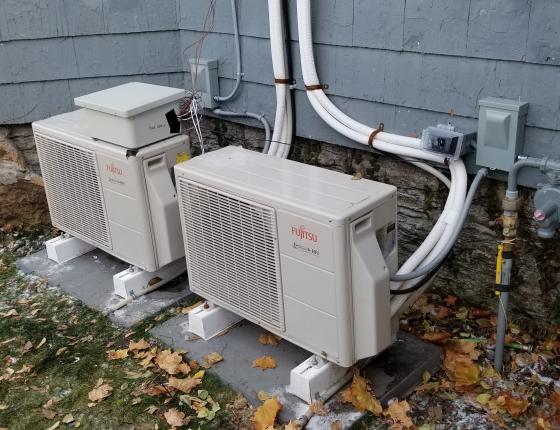Update: February 2024
The project is nearing its conclusion with findings on the importance of quality ASHP installation and design. There are so many possible configurations that it is vital to map and match heat pump solutions onto existing heating system conditions for cost-effective and energy efficient results. This represents a departure from how HVAC systems are typically updated, therefore will require sufficient contractor education and training. Many design questions are around zoning and control, with the goal of marrying the best performance and cost with how the unit is serving the consumer. The multifamily project will be featured in a webinar this spring.
Update: January 2023
The project team has completed installation of ccASHPs at almost all test sites and collected data through a partial heating season. From the initial results, the team concluded that the ccASHPs could have operated more efficiently and they are in the process of further optimizing installations and collecting and processing data on those updates. Project timelines have been extended and the team expects to summarize the test site data for a final presentation and report in 2023.
Overview
The 2018 CARD Minnesota Energy Efficiency Potential Study identified cold climate air source heat pumps (ccASHPs) as the technology expected to provide 25% of total residential electrical savings in the state in the coming decade. This will be an essential component in meeting Minnesota’s 1.5% conservation goal.
Within the past year several Minnesota electric utilities have modified their existing heat pump programs or undertaken ccASHP pilots to increase installations. However, installations have been slow to date due to lack of familiarity with this technology on the part of Minnesota contractors and consumers. Most ccASHP research and programs have been designed to characterize and impact the single-family market. This project will focus on the outstanding questions and modifications needed for applications in the multifamily sector.
This project will engage stakeholders and screen multifamily buildings to understand the range of building and heating and cooling system features that will impact heat pump performance. ccASHP system type selection, sizing, configuration, and control guidance will be developed and used alongside existing industry installation and monitoring best practices in up to 20 multifamily test units. Analysis will be conducted to determine typical statewide performance, energy and carbon savings, cost effectiveness, and the overall potential to assist in reaching conservation improvement goals.
Project Summary
Objective
This study will measure the performance, energy savings, and customer acceptance of ductless ccASHPs in multifamily applications and establish installation protocols to ensure their potential is realized.
Scope
- Field work at up to 20 total test units in as many as four buildings selected based on previous market characterization.
- Develop and refine application protocols based on field data.
Non-energy benefits
- Increased affordability of housing for occupants.
- Increased home comfort.
- More desirable properties, increasing occupancy and decreasing turnover for property owners.
More Resources
